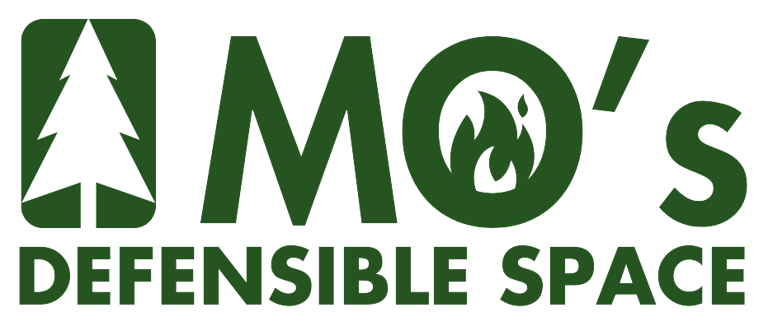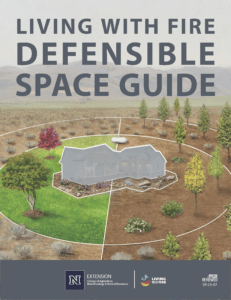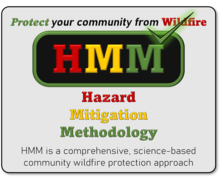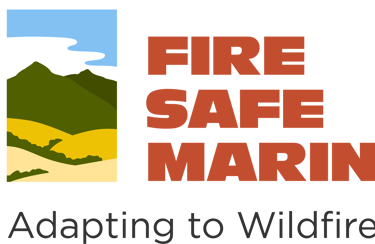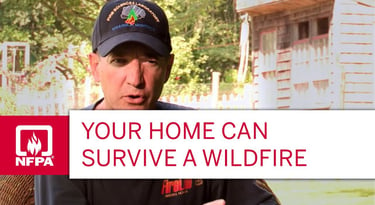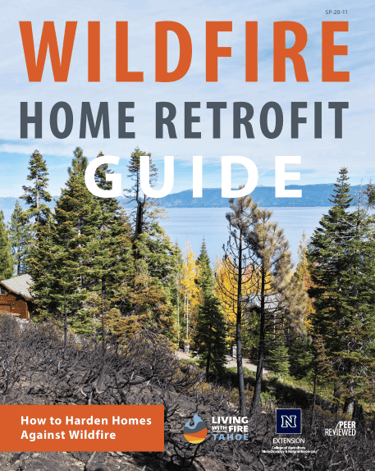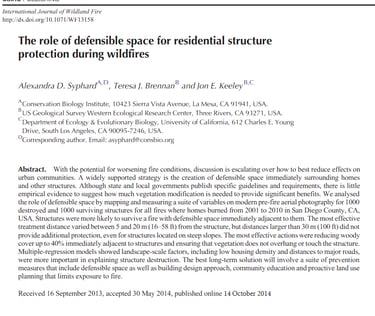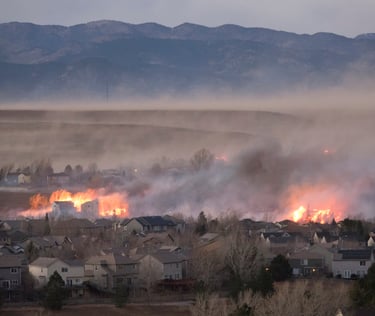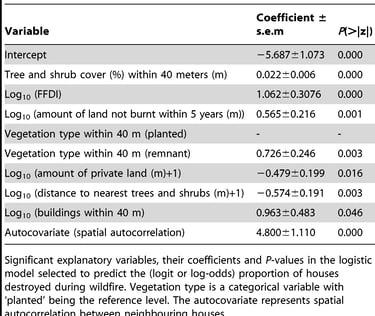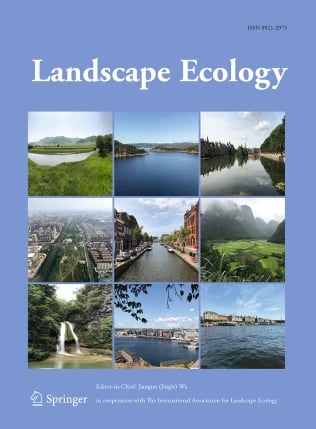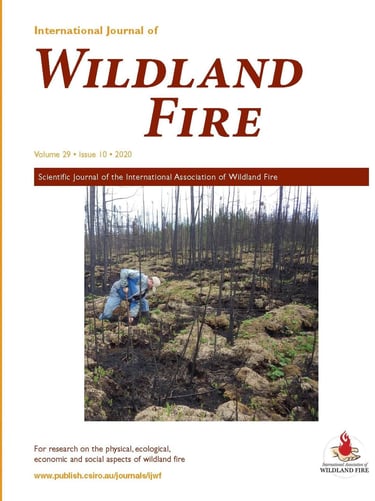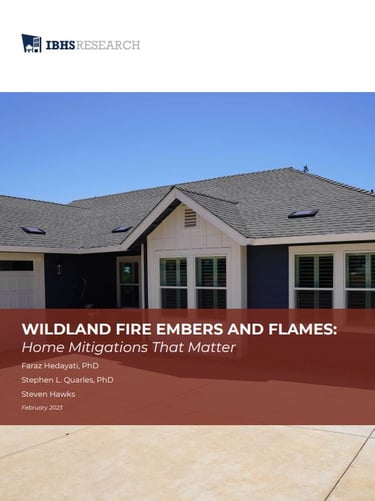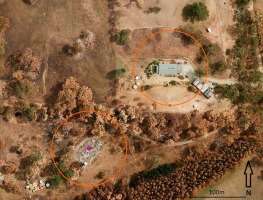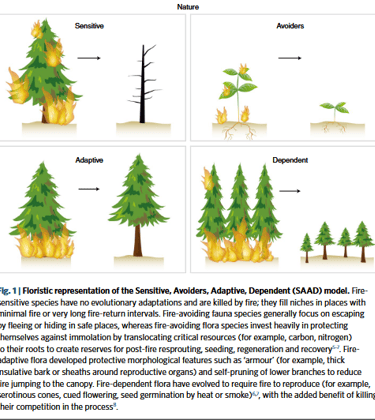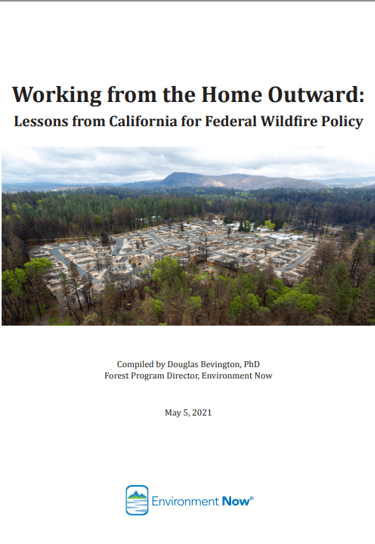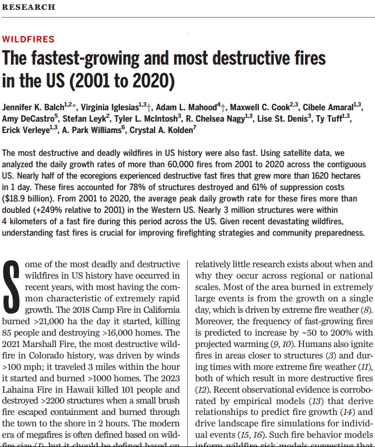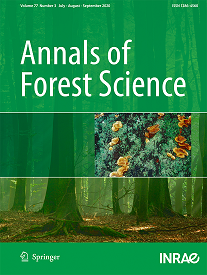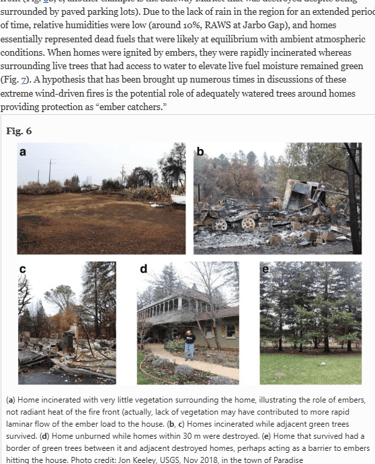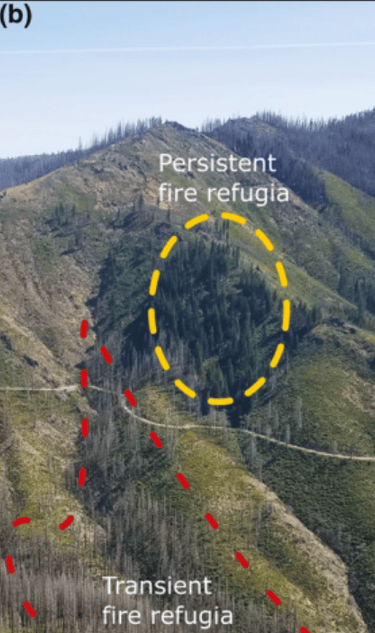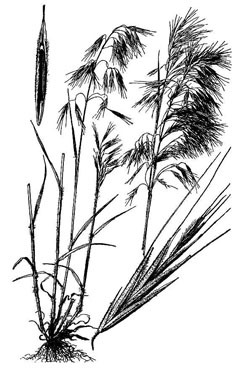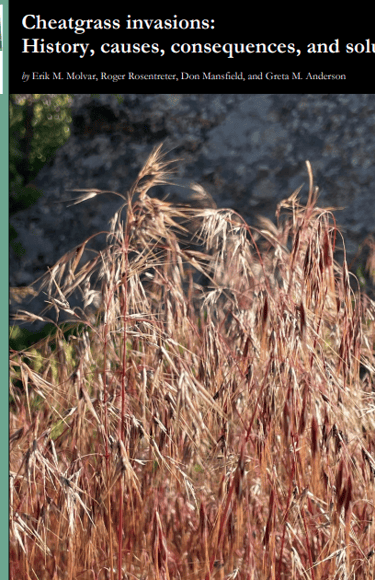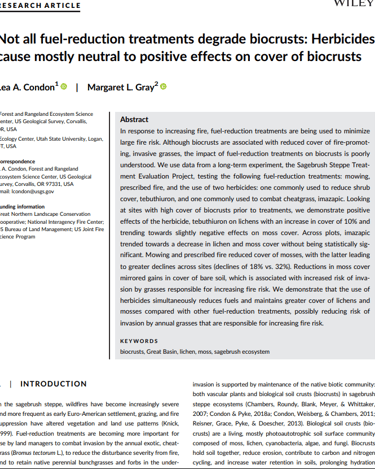Science and Resources!
Defensible space, wildfire science, ecology and gardening academic resources, webpages, and additional information.
5/8/202411 min read
Defensible Space Web Resources:
Living With Fire's 2024 Comprehensive Defensible Space Guide
Highlights:
An extensive guide to home ignition zone planning and implementation.
Removal of all vegetation is not good for ecosystem health and can often lead to an increase in invasive weeds and grasses (such as cheatgrass).
Living With Fire Defensible Space Guide. (n.d.). Extension | University of Nevada, Reno. Retrieved February 5, 2025, from https://extension.unr.edu/publication.aspx?PubID=5522
Hazard Mitigation Methodology (HMM) Community Based Mitigation Strategies
Highlights:
HMM is a performance-based approach to WUI fire hazard mitigation for structures, parcels, and communities. The proposed methodology was developed to reduce structural losses in WUI fires by hardening structures and parcels across a community. HMM prioritizes mitigation efforts to reduce overall mitigation costs.
HMM expands parcel level mitigation planning to an entire community to prevent structure to structure ignitions during wildfire.
HAZARD MITIGATION METHODOLOGY (HMM). (2023). NIST. https://www.nist.gov/hazard-mitigation-methodology
Fire Safe Marin, Marin County's Extensive Guide to Wildfire Risk Reduction
Highlights:
Defensible space and home hardening guides and suggestions.
Resources for FireWise USA
Native plant guide
Jack Cohen, Fire Ecologists, Describes How Your Home Can Survive a Wildfire!
Highlights:
13 minutes, just watch the video!!
Home Hardening Web Resources:
Living With Fire's Wildfire Home Retrofit Guide
Highlights:
Guide provides specific recommendations for how to retrofit features of a home or structure.
Describes how retrofitting each specific component can help improve the resiliency of the overall structure.
Provides in-depth descriptions with illustrations, making it easy to understand and follow.
Insurance Institute for Business Home and Safety (IBHS) Prepare and Protect Your Home from Wildfire
Highlights:
Provides actionable steps to better protect your home from wildfire.
Includes downloadable wildfire prep guides.
Outlines how to create a wildfire plan for your family and home.
Defensible Space Research Articles:
The Role of Defensible Space for Residential Structure Protection During Wildfires
Highlights:
This study found that structures were more likely to survive a fire with defensible space immediately adjacent to them.
The most effective treatment distance varied between 5 and 20 m (16–58 ft) from the structure, but distances larger than 30 m (100 ft) did not provide additional protection, even for structures located on steep slopes.
The most effective actions were reducing woody cover up to 40% immediately adjacent to structures and ensuring that vegetation does not overhang or touch the structure.
Syphard, A. D., Brennan, T. J., & Keeley, J. E. (2014). The role of defensible space for residential structure protection during wildfires. International Journal of Wildland Fire, 23(8), 1165–1175. https://doi.org/10.1071/WF13158
Wildland-Urban Fire Disasters Aren't Actually a Wildfire Problem
Highlights:
Almost all wildfire destruction (homes loss or damages) occurs within the first 12 hours after ignition and occurs during extreme wind events.
During these types of fires, suppression efforts by firefighters are largely ineffective. The determining factor of if a house will survive are the preventative measures, in terms of home hardening and defensible space, that were taken prior to the fire's ignition.
When fires enter a community, parcel to parcel and structure to structure ignitions become the driving force for home loss and damage.
Calkin, D. E., Barrett, K., Cohen, J. D., Finney, M. A., Pyne, S. J., & Quarles, S. L. (2023). Wildland-urban fire disasters aren’t actually a wildfire problem. Proceedings of the National Academy of Sciences, 120(51), e2315797120. https://doi.org/10.1073/pnas.2315797120
Image credit: iStock/milehightraveler.
Land Management Practices Associated with House Loss in Wildfires
Highlights:
Losses to life and property from wildfires are forecast to increase because of population growth in peri-urban areas and climate change.
This study found that modifying fuel closer to houses, within 40m, was a more effective way to reduce house loss than modifying fuels more distant from houses. However, the majority (89%) of fuel treatments on federal lands in the U.S were >2.5km from the WUI and are likely to have little to no effect on determining structure loss or damages in the event of a wind-driven wildfire.
Gibbons, P., Bommel, L. van, Gill, A. M., Cary, G. J., Driscoll, D. A., Bradstock, R. A., Knight, E., Moritz, M. A., Stephens, S. L., & Lindenmayer, D. B. (2012). Land Management Practices Associated with House Loss in Wildfires. PLOS ONE, 7(1), e29212. https://doi.org/10.1371/journal.pone.0029212
Defensible Space Treatments Could Reduce Loss in WUI Wildfire Disasters
Highlights:
95% of USA building loss in WUI wildfire disasters was within 100 m of wildland vegetation.
About 95% of at-risk land within 100 m of wildland vegetation is not federally owned, and WUI wildfire disasters are mostly from fires started on private land.
Defensible-space treatment of < 114,000 ha 40 m from high-risk buildings near wildland vegetation could reduce loss in WUI wildfire disasters across Colorado’s 27 million ha. (2024). ResearchGate. https://doi.org/10.1007/s10980-022-01539-0
Factors Influencing Ember Accumulations Near a Building During Wildfire
Highlights:
Ember exposure accounts for up to 90% of structural ignitions during wildfire events.
The risk of ignition from embers depends on several features, including the number of embers, the ember characteristics, the amount of and type of combustible debris or materials near the building, the duration of the ember attack, and environmental conditions.
The study found that ember accumulation was greatest on rough surfaces (mulch/wood chips) and along flat walls and re-entrant corners. Building geometry and the immediate landscape surrounding the building were the biggest determining factors on ember accumulation.
Quarles, S. L., Standohar-Alfano, C., Hedayati, F., & Gorham, D. J. (2023). Factors influencing ember accumulation near a building. International Journal of Wildland Fire, 32(3), 380–387. https://doi.org/10.1071/WF22132
Ember Risk Modeling, a New Approach to Community Resilience from Wildfire
Highlights:
Ember dispersion is determined by wind speed and direction. Wind direction, in many cases, is predictable, as extreme fire weather often follows patterns of prevailing winds.
Home hardening and defensible space efforts should be prioritized in areas that are downwind from the prevailing winds and thus most likely to accumulate embers.
Vegetation can either screen or fuel fires depending on the vegetative characteristics. With planning, certain types of vegetation can be used to reduce ember accumulation and reduce structure ignitions.
Roberts, M. E., Rawlinson, A. A., & Wang, Z. (2021). Ember risk modelling for improved wildfire risk management in the peri-urban fringes. Environmental Modelling & Software, 138, 104956. https://doi.org/10.1016/j.envsoft.2020.104956
Wildland Fire Embers and Flames, Home Mitigations that Matter
Highlights:
A two-tiered approach of home hardening and defensible space is the most effective way to reduce wildfire risks.
Wind patterns near buildings heavily influence ember distribution and accumulation locations.
Zone 0, or the first five (5) feet from a building is the most important area to maintain fuel treatment and management. Any combustibles in Zone 0 have a high probability of ember exposure and potential ignitions.
Hedayati, F., Quarles, S. L., & Hawks, S. (n.d.). Home Mitigations That Matter. IBHS Research. https://ibhs1.wpenginepowered.com/wp-content/uploads/Home-Mitigations-that-Matter-FINAL.pdf
Strategically Using High Moisture Content Vegetation To Reduce Structure Loss
Highlights:
This study shows that maintaining healthy vegetation via irrigation or landscaping with woody naturally high moisture content vegetation around a home can be effective in reducing structure loss.
High moisture content vegetation requires more energy to ignite and can play an important role in self-extinguishing fires.
Vegetation should be kept in clumps or islands to minimize the spread of fire around a landscape.
Maintained vegetation serves many additional protections to wildfire, like maintaining shade, sheltering wind, and promoting biodiversity and healthy ecosystem functions.
Gibbons, P., Gill, A. M., Shore, N., Moritz, M. A., Dovers, S., & Cary, G. J. (2018). Options for reducing house-losses during wildfires without clearing trees and shrubs. Landscape and Urban Planning, 174, 10–17.https://doi.org/10.1016/j.landurbplan.2018.02.010
Using Biomimicry to Become Fire Adaptive; Lessons Learned from Nature
Highlights:
Human communities cannot avoid fire, but we can adapt to fire.
To coexist with fire, we need to adapt our communities to survive the projected fire regime by learning from the fire adaptive traits of flora and fauna.
Fire refugia, or areas that are largely unaffected by fire within the burn perimeter, provide the perfect example of how we can design homes and communities. With proper defensible space and home hardening, we can create fire refugia’s (biomimicry).
*This article is currently behind a paywall, if you are interested in reading it please send us an email.
Smith, A. M. S., Kolden, C. A., & Bowman, D. M. J. S. (2018). Biomimicry can help humans to coexist sustainably with fire. Nature Ecology & Evolution, 2(12), 1827–1829.https://doi.org/10.1038/s41559-018-0712-2
Working From the Home Outward; Lessons From Wildfire and Wildfire Policy
Highlights:
Working on fire-safe home and landscape retrofits offers the most effective and cost effective way to increase public safety during wildfires.
We can create ignition resistant homes and prevent community wildfire disasters without having to control the wildfires themselves.
The majority of home ignitions come from firebrands and low-intensity surface fires
Explores common myths about wildfires
Bevington, D., Cohen, J. D., Ingalsbee ., T., Hanson, C., DellaSala, D. A., Wolf, S., Nowicki, B., Halsey, R., & Baker, B. (2021). Working from the Home Outward: Lessons from California for Federal Wildfire Policy. Enrionment Now.https://environmentnow.org/wp-content/uploads/2021/05/Home-Outward-report-2021-1.pdf
Wildfire Science Research Articles:
The Fastest-Growing and Most Destructive Wildfires in the US (2001 to 2020)
Highlights:
This study defined fast fires as events that grow >1620 ha on a single day. These fast fires represent only 2.7% of all events, yet they account for 89% of the total structures damaged or destroyed in all wildfire events from 2001 - 2020.
Most of the area burned in extremely large wildfire events is from the growth on a single day, which is driven by extreme fire weather.
High winds are the greatest determining factor for whether or not a wildfire results in loss or damage of structures.
*This paper is currently paywalled, if you are interested in reading it, please send us an email.
The fastest-growing and most destructive fires in the US (2001 to 2020) | Science. (n.d.). Retrieved February 5, 2025, from https://www.science.org/doi/10.1126/science.adk5737
Firebrand (Ember) Characteristics
Highlights:
Different vegetative types create different ember brands with various ember dispersion characteristics. Some vegetative types produce short-range, high volume embers, while others tend to produce longer range, lower volume embers.
Long-range embers have dispersion ranges up to several kilometers.
Ganteaume, A., Guijarro, M., Jappiot, M., Hernando, C., Lampin-Maillet, C., Pérez-Gorostiaga, P., & Vega, J. A. (2011). Laboratory characterization of firebrands involved in spot fires. Annals of Forest Science, 68(3), Article 3. https://doi.org/10.1007/s13595-011-0056-4
Differentiating Between Wind-Driven and Fuel-Driven Wildfires in California
Highlights:
This is a case study examining large fires in California from 2003 to 2018 and categorizing those fires, when applicable, into being driven primarily by fuel load or driven primarily by extreme wind events.
The most disastrous fires in terms of loss of human lives and property are less tied to fuel loads than they are extreme wind events.
In wind driven events, a lack of vegetation (moonscaping) may create a pathway for embers to spread to the home.
A hypothesis around extreme wind fires is the potential role of healthy trees around homes providing protection as “ember catchers.”
Keeley, J. E., & Syphard, A. D. (2019). Twenty-first century California, USA, wildfires: Fuel-dominated vs. wind-dominated fires. Fire Ecology, 15(1), 24.https://doi.org/10.1186/s42408-019-0041-0
Fire Refugia; The Natural Landscape Mosaics Within Wildfire
Highlights:
Wildfires burn in patchy landscape mosaics with areas within the burn perimeter that remain relatively unaffected.. These areas are termed fire refugia.
Fire refugia patches can persist through several fires spanning decades, indicating that certain landscape features make those areas less prone to burning.
During this study, refugia accounted for 31% of the total burn perimeter for over 25 fires that burned a total of 30,953 ha
Downing, W. M., Meigs, G. W., Gregory, M. J., & Krawchuk, M. A. (2021). Where and why do conifer forests persist in refugia through multiple fire events? Global Change Biology, 27(15), 3642–3656. https://doi.org/10.1111/gcb.15655
Ecology and Plant Science: Cheatgrass
Cheatgrass and Wildfire Fact Sheet
Cheatgrass is a noxious invasive weed with destructive habits. It notoriously thrives in disturbed areas and is difficult to control once it is established. This invasive grass is highly flammable and is changing the natural fire regime across the Western U.S.
Highlights:
Cheatgrass is highly flammable and densely growing populations provide ample, fine-textured fuels that increase fire intensity and often decrease the intervals between fires.
A typical cheatgrass fire on flat terrain with wind speeds of 20 miles per hour may generate flame lengths up to eight feet in height; the fire can travel more than four miles per hour.
This weed can produce more than 10,000 plants per square yard.
Cheatgrass and Wildfire—6.310—Extension. (n.d.). Retrieved February 5, 2025, from https://extension.colostate.edu/topic-areas/natural-resources/cheatgrass-and-wildfire-6-310/
Cheatgrass Literature Review; History, Causes, Consequences and Solutions
Highlights:
Surface disturbance are the key ecological switches that transition healthy arid ecosystems to cheatgrass invaded systems, by eliminating the native bunchgrasses and biological soil crusts that are the natural defense against weeds. Surface disturbances include mechanized land treatments such as masticators and forestry mulchers.
Cheatgrass thrives where the native plant cover has been killed or badly damaged.
Land uses are often at the root of diminished native plant resilience, which can be altered when disturbance patterns depart from historical norms (e.g., inappropriate livestock grazing or clearcut logging).
Molvar, E. M., Rosentreter, R., Mansfield, D., & Anderson, G. M. (n.d.). Cheatgrass invasions: History, causes, consequences, and solutions. https://westernwatersheds.org/wp-content/uploads/2024/02/Cheatgrass-Literature-Review-final.pdf
The effects of different treatment types on soil biocrust
Highlights:
Biocrusts are living soil surface communities that hold soils in place, reduce erosion, increase soil water retention, and contribute to nitrogen and carbon cycling. Healthy biocrusts can create natural fire breaks, and reduce landscape susceptibility to cheatgrass invasions.
Heavy soil compaction degrades biocrust and allows for the spread of cheatgrass.
Mechanized treatments (mowing) had the greatest negative impact on biocrust.
Condon, L. A., & Gray, M. L. (2020). Not all fuel‐reduction treatments degrade biocrusts: Herbicides cause mostly neutral to positive effects on cover of biocrusts. Land Degradation & Development, 31(13), 1727–1734.https://doi.org/10.1002/ldr.3516
